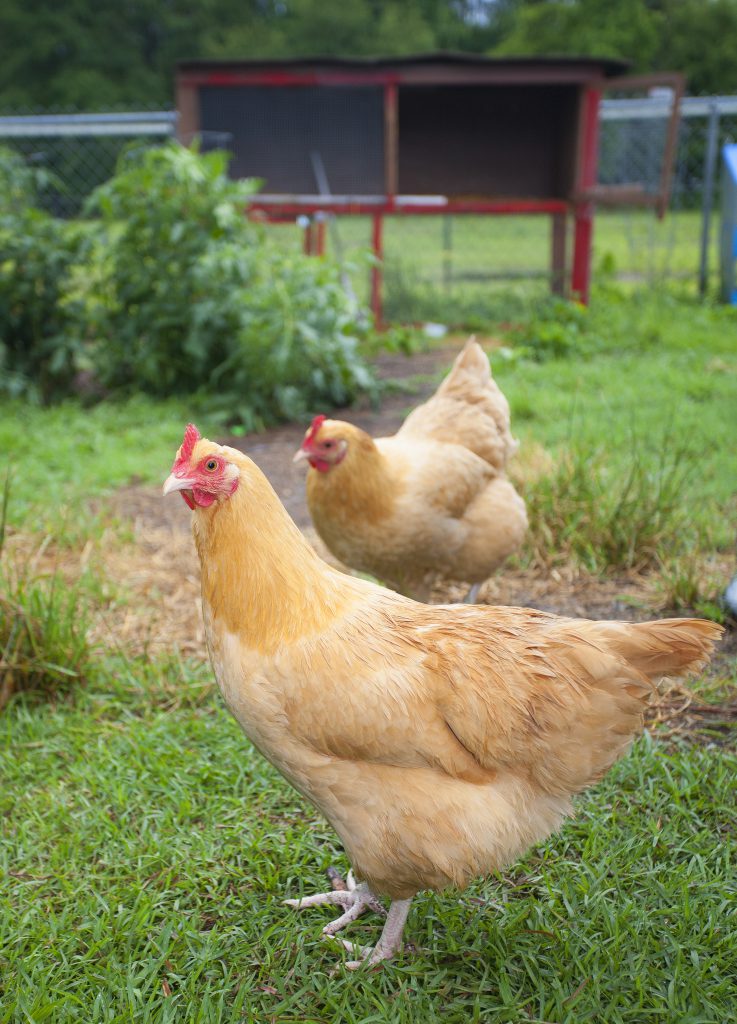
Whether you’re starting with a group of new chicks or you’re looking to add a few new hens to an existing flock, proper planning, care and management can help the transition in introducing new chickens to your flock to be most successful.
Mikelle Roeder, Ph.D., a flock nutrition expert for Purina Animal Nutrition, says it’s especially important to understand the commitment of raising new birds.
“Springtime and new birds are often thought of together: both represent new beginnings and excitement, but we can’t forget that raising chicks is a long-term commitment,” Roeder says.
“Be sure to have a long-term plan and a place for them to live before your new birds arrive,” she adds. “Preparing for new arrivals can help prevent the spread of disease and keep the peace in your existing flock’s pecking order.”
Manage new birds separately.
As soon as new birds arrive, keep them separate from the rest of the flock. This allows you to monitor the birds closely and prevent any possible illness from spreading to either group.
“New birds have often traveled a fair amount and been near other birds – and your existing flock may have built immunity to germs in your area,” Roeder says. “Keep new birds in a separate room or coop for 30 days and monitor them to make sure they are free of disease and to acclimate them to your backyard.”
During this period, work with the existing flock first and wash your hands between groups to prevent any cross-contamination.
A similar quarantine plan is recommended for new chicks, as older hens can transmit disease to chicks and pullets. For chicks, though, the separation should last for 18 weeks to help the birds reach mature size and transition onto a layer feed before meeting other members of the flock.
“Start new chicks away from the flock, in a brooder,” Roeder says. “This allows you to provide the chicks supplemental heat and teach them to drink and eat a high-energy complete feed. Once they are ready to enter a coop, continue to raise them separately until they reach the same size as the mature birds to minimize potential physical injuries once the two groups of birds are introduced.”
Introduce birds in groups.
After the quarantine period, gradually familiarize new birds to the existing flock. Introducing groups of birds similar in size and traits into a familiar setting can help provide a smooth transition. Be sure there is plenty of space to prevent overcrowding.
“One way to help both groups acclimate to each other is to place the two groups in side-by-side runs,” Roeder says. “Placing the two groups next to one another for one week can help the birds form bonds before being housed together. It can also alert you to potential personality clashes that may be difficult to resolve. Another strategy is to let the new group free-range first and then introduce the existing flock to place the focus on new surroundings rather than new flock members.”
In either case, add additional feeders and waterers to the run to prevent the new birds from being deterred from eating and drinking. During the introduction period, the new pecking order will begin to be established. In most flocks, one bird is dominant in the group and the remaining birds will fall into an accepted order below the dominant bird. Occasionally two strong-willed birds may consistently fight in an attempt to gain the position of dominant bird. In this case, the owner may need to find a new home for one of them in order to maintain peace in the flock.
“The pecking order is a very stable structure in the group until a bird is removed or new birds are added,” Roeder says. “At that point, the order must be re-established. Add new birds in a group with similar-sized hens and plenty of available feed, space and water to help ease the transition.”
Monitor for success.
After new birds are added to the group, monitor the flock for success or fallouts.
“Watch the group closely after the introduction,” Roeder says. “Birds that are happy, healthy and content will continue their routines without changes in personality or feed consumption. Consistency is especially important during transitions, so be sure to continue providing high-quality complete feed, shelter and fresh water at all times.”
Mikelle Roeder, Ph.D. – Multi-Species Nutritionist – Purina Mills



